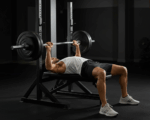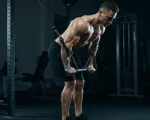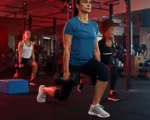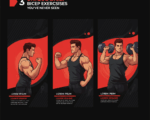Rowing is a sport that combines strength, endurance, and mental focus. It’s no wonder rowers find it incredibly rewarding. However, like any physically intense activity, rowing comes with the risk of injury. Overuse injuries, in particular, are common due to the repetitive nature of the rowing stroke.
In this guide, we’ll take a deeper look at some of the most prevalent rowing injuries, explore prevention strategies, and provide insights into treatment and rehabilitation. Whether you’re a rower, coach, or sports therapist, this article will help you better understand how to keep yourself or your athletes performing at their best.
Common Rowing Injuries
The following injuries are among the most frequently encountered by rowers:
1. Lower Back Pain
Lower back pain is one of the most prevalent complaints among rowers, often caused by the repetitive motion of the stroke combined with poor technique or overuse. The forward-flexed posture on an ergometer, in particular, can place undue strain on the lower spine.
Symptoms:
- Persistent or sharp pain in the lower back.
- Increased discomfort during or after rowing sessions.
2. Rib Stress Fractures
Rib stress fractures are unique to rowing compared to other sports. They occur when repetitive motions cause chest wall muscles to pull on weaker areas of the ribs, leading to micro-injuries.
Symptoms:
- Pain along the ribcage, especially during deep breaths or rowing.
- Tenderness around the affected rib area.
3. Wrist Tendonitis
Wrist tendonitis occurs when the tendons in the wrist become inflamed due to continuous wrist extension during rowing. This injury is common among rowers who handle oars for long periods.
Symptoms:
- Pain, swelling, or discomfort in the wrist area.
- Reduced range of motion in the wrist.
Preventing Rowing Injuries
Proper training and technique can go a long way in minimizing the risk of injuries. Here’s how rowers can protect their bodies:
1. Maintain Proper Form
Ensure correct form during every stroke. The key is to keep the spine in a neutral position, maintain aligned knees and hips, and use smooth, controlled movements.
2. Gradual Training Progression
Avoid sudden increases in training intensity, volume, or frequency. A stepwise progression helps the body adapt and reduces the likelihood of overuse injuries.
3. Balance Strength and Flexibility
Establish a well-rounded training routine that incorporates core strengthening, upper and lower body exercises, and flexibility work. This ensures you have the stability and mobility needed to support the repetitive motion of rowing.
4. Cross-Train
Engage in alternative forms of exercise like swimming, cycling, or yoga to reduce repetitive strain while maintaining cardiovascular fitness and endurance.
5. Use Ergometer with Caution
When training with an ergometer (rowing machine), monitor technique closely to avoid the forward-flexed posture that often strains the lower back.
Treating Rowing Injuries
When injury strikes, addressing it promptly can prevent long-term complications. Here are some effective treatment and rehabilitation strategies:
1. Rest and Modify Activity
For overuse injuries, the first step is rest. Take at least two weeks off from rowing (especially ergometer training). Use this time to focus on low-impact exercises such as swimming or biking to maintain fitness.
2. Pain Relief
Use ice packs or heating pads to reduce discomfort. For mild pain, over-the-counter medications such as acetaminophen can be helpful. Avoid NSAIDs for rib injuries, as they may delay healing.
3. Physical Therapy
Enlist the help of a sports physiotherapist who specializes in rowing. They can guide you through strengthening exercises, correct muscle imbalances, and improve joint alignment.
4. Technique Assessment
Work with a coach or expert to identify any flaws in your rowing stroke that may have contributed to the injury. Adjusting your technique can prevent recurrence.
5. Gradual Return
After an injury, take a progressive approach to return to rowing. Begin with low-intensity sessions, gradually increasing the volume and intensity as your body adapts. Listen to your body and stop if pain resurfaces.
The Role of Rehabilitation in Rowing
Rehabilitation for rowing injuries often focuses on strengthening the affected area, improving flexibility, and gradually rebuilding endurance. A multidisciplinary approach involving physical therapists, nutritionists, and sports psychologists may be beneficial, especially for competitive rowers.
For example:
- Lower Back Pain Rehab: Strengthen the core and improve hip mobility to reduce strain on the lower back.
- Rib Stress Fractures Rehab: Gradually incorporate weight-bearing exercises that don’t involve the upper body until healing is complete.
- Wrist Tendonitis Rehab: Focus on gripping techniques, hand positioning, and reducing tension during rowing strokes.
Final Thoughts for Coaches and Rowers
Rowing injuries, while common, are not inevitable. By paying attention to proper form, training intelligently, and addressing issues early, rowers can enjoy the sport they love while reducing the risk of injury.
Ultimately, keeping your body in peak condition and listening to its signals are key to long-term success. For coaches, instilling these principles in athletes will build not just stronger rowers, but healthier ones.
If you’re a rower recovering from injuries or a coach looking to optimize training programs, start with these tips and adapt them to your needs. And remember, consulting sports specialists can make all the difference in your performance and recovery.
Stay strong, row smart, and take care of your body for the long haul on the water.








